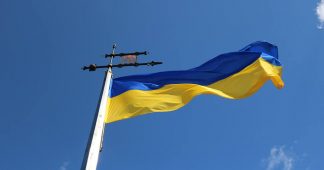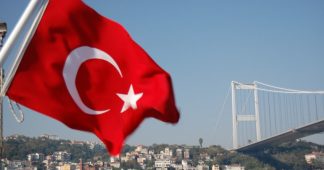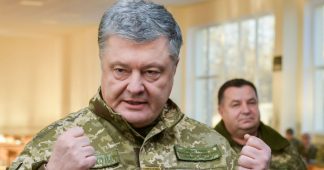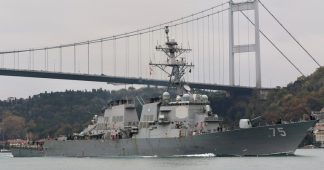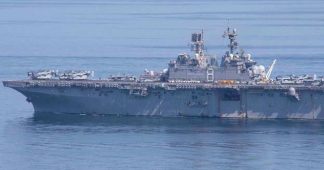By Clara Weiss
Apr. 14, 2021
The US and NATO are dangerously escalating threats against Russia over Ukraine.
On Tuesday, NATO Secretary General Jens Stoltenberg insisted that NATO would decide on Ukraine’s NATO membership and that Ukraine, which has been pushing for accelerated admission, had a right “to apply for membership.” He denounced Russia for allegedly moving its troops toward the Ukrainian border, calling the move “unjustified, unexplained and deeply concerning.”
Both Stoltenberg and US Secretary of State Antony Blinken met with Ukraine’s Foreign Minister Dmytro Kuleba in Brussels, who urged that Ukraine be admitted to NATO. A day before, CNN published a video report with Ukrainian President Volodymyr Zelensky, who also insisted that NATO admit Ukraine as soon as possible, even at the risk of an escalation of the conflict with Russia.
Later on Tuesday, US President Joe Biden spoke with Russian President Vladimir Putin, again stressing US support for Ukraine. He also proposed a summit in the coming months to discuss US-Russia relations and urged Russia to “de-escalate” the situation.
In reality, it is NATO and Ukraine that have been aggressively escalating tensions in the region. Immediately underlying the current flare-up of conflict was the adoption of a strategy to “retake” Crimea by the Zelensky government, and open discussions of a Ukrainian offensive in East Ukraine. Both were tantamount to declaring that Ukraine was preparing for all-out war with Russia.
In response to a US- and EU-backed coup in Kiev by far-right forces against the pro-Russian government of Viktor Yanukovich in February 2014, Russia had annexed the Crimean peninsula, which hosts the naval base of its Black Sea Fleet. The coup also triggered a now seven-year long civil war in East Ukraine between Russian-backed separatists and the Ukrainian army that has claimed over 14,000 lives and displaced millions.
The Ukrainian government launched these provocations just weeks after the inauguration of Democratic President Joe Biden, who has embarked on an aggressive course against both Russia and China.
The US is now deploying two warships to the Black Sea through the Turkish straits, starting April 14. According to Russian Defense Minister Sergei Shoigu, NATO has amassed 40,000 troops and 15,000 items of military equipment along Russia’s borders, above all in the Black Sea region and the Baltics.
On Tuesday, NATO launched Locked Shields 2021, which has been described as the largest cyber war exercise in the world. Focused in the Baltics, it involves NATO practicing how to protect civilian and military infrastructure, such as water treatment and energy facilities, in case of international conflict.
Russian Deputy Foreign Minister Sergei Ryabkov has responded to the provocative statements by representatives of the US government by calling the US an “adversary.” He denounced the US deployment of two warships, warning the US “to stay far away from Crimea and our Black Sea coast. It will be for their own good.” Russia is now conducting military exercises on its southern front, and in the Black Sea.
The actions by NATO, above all the threats of Ukrainian NATO membership, are extraordinarily reckless provocations, directly posing the risk of war between nuclear-armed Russia and the NATO powers.
Russia has long warned that NATO membership of Ukraine would cross a red line. Since the Stalinist dissolution of the Soviet Union in 1991, NATO, despite promises to the contrary, has expanded ever closer to Russia’s borders, including Poland, Romania, Bulgaria and the Baltic states. It was also as part of the encirclement of Russia that the US and Germany organized two coups in Ukraine, in 2004 and 2014.
The Black Sea region is an important component of US strategy, aimed at countering both Russia and China. A recent report by the Washington-based Center for European Policy Analysis think tank (CEPA) stressed that, “Growing Russian (and Chinese) influence in the BSR [Black Sea region] affects wider Western interests in the Middle East, the Mediterranean, and Southwest Asia.”
The report, authored by a former commander of US Army Europe, urged NATO to “invite Georgia into NATO and put Ukraine on a fast track to membership.” It further advocated that the Russian Black Sea fleet should be made “vulnerable” off the coast of Crimea, including through “the deployment of drones and cruise missiles … and the deployment of mine-laying capability.”
Other recent think tank reports have stressed the need to counter the influence of China in the region, which has established close economic relations with several countries, including Ukraine.
Precisely because of the intersection of various geopolitical conflicts and interests, the crisis in the Black Sea region has the potential to trigger a catastrophic regional, and even global war. Already, the conflict has drawn in Turkey, Poland and Belarus.
This weekend, the Turkish president Recep Tayyip Erdogan met with Zelensky, endorsing the belligerent “Crimean Platform.” Moreover, it is only thanks to the permission granted by Ankara that the US is legally able to deploy its warships to the Black Sea.
Before the meeting, Putin had called Erdogan, explicitly urging him to not back Ukraine in the conflict and to not scrap the 1936 Montreux convention which regulates passage between the Black Sea and the Mediterranean, limiting warship deployments. The Montreux convention is seen as critical by Russia’s ruling class to prevent the Black Sea from becoming “an American lake,” as one State Duma deputy put it.
On Monday, Russia suspended all air travel with Turkey, citing the explosion of coronavirus cases in the country. While other countries, including the UK, have also ended air travel to Turkey because of the pandemic, commentators speculate that the move was a response to Erdogan’s backing of Zelensky.
There have also been troop movements in Belarus and Poland. Earlier this week, the Polish government reportedly began sending troops to its borders with Belarus. Warsaw has denied that the deployment had anything to do with the crisis in the Black Sea. However, it comes just over a week after Russia reportedly sent troops to the Ukrainian-Belarusian border. On Tuesday, the Belarusian Defense Ministry summoned the attaché of the Polish embassy after an unidentified aircraft had violated Belarusian airspace on the Polish-Belarusian border.
Tensions between Belarus and Poland have grown in recent months as Warsaw has openly supported the anti-Lukashenko opposition. Warsaw is also closely aligned with the NATO war drive against Russia and the Ukrainian government of Zelensky, whose “Crimean Platform” Warsaw supports.
By contrast, President Alexander Lukashenko, besieged by mass protests that initially also encompassed significant sections of the working class, has recently turned to the Russian oligarchy for political and military support, endangering Belarus’ earlier close ties with Kiev.
The current war crisis starkly underlies the disastrous outcome of the Stalinist dissolution of the Soviet Union in 1991, the culmination of the decades-long betrayal of the October revolution by the Stalinist bureaucracy.
Three decades after the restoration of capitalism, living standards of the working class everywhere have been decimated, and endless wars by US imperialism have devastated much of North Africa and the Middle East. The former Soviet Union itself has been turned into a geopolitical powder keg.
The working class has no interest in the catastrophic wars that are being prepared. Already, hospitals across the region are overwhelmed and thousands are dying every day from COVID-19 because of the criminal response of the ruling class to the pandemic. In the US, more people have died from the pandemic than in both world wars combined.
In Ukraine itself there is enormous popular hostility to any continuation, let alone expansion, of the conflict with Russia. However, the opposition to imperialist war within the international working class must be armed with a political program and leadership.
excerpt from an article at www.wsws.org
